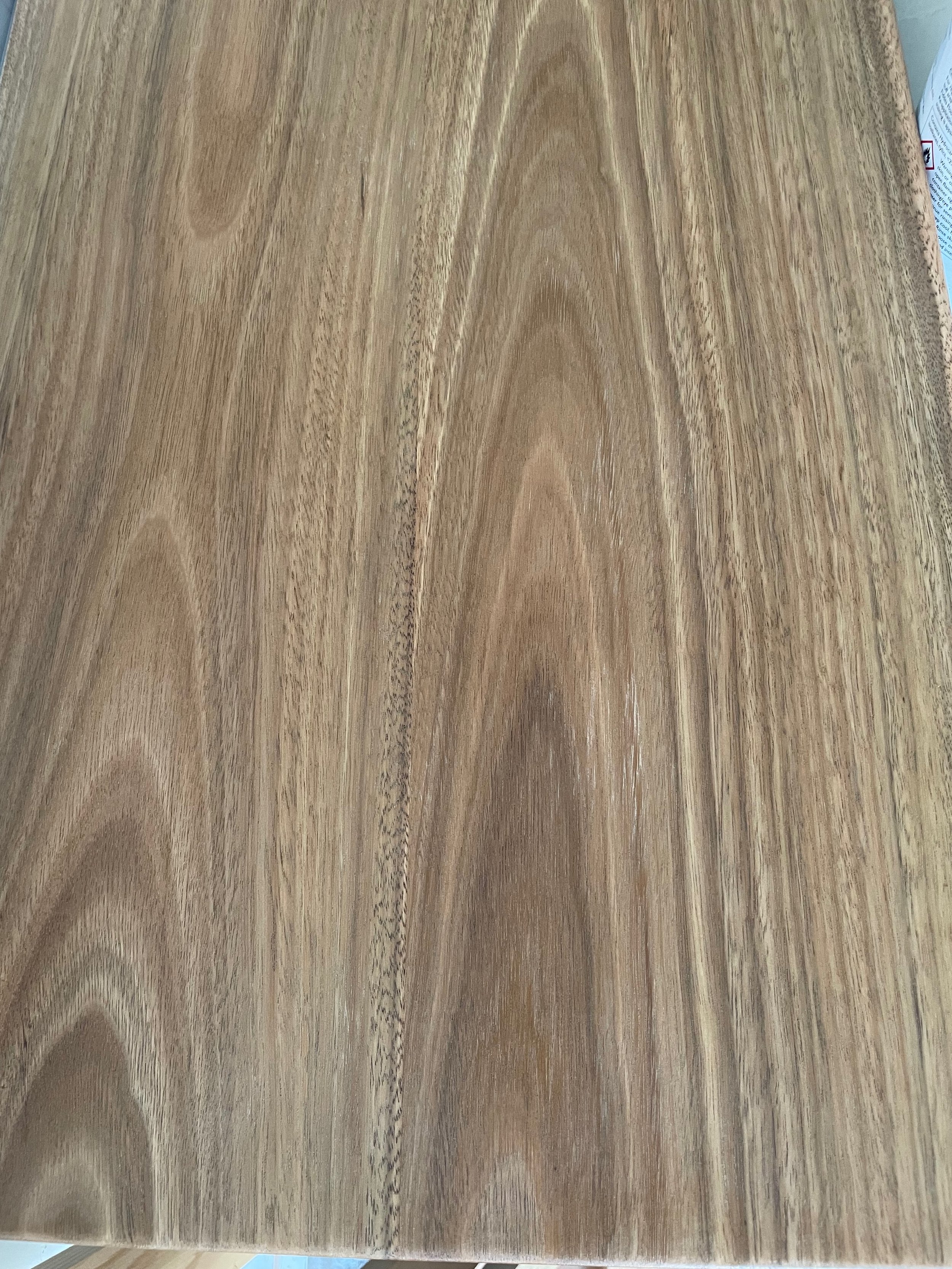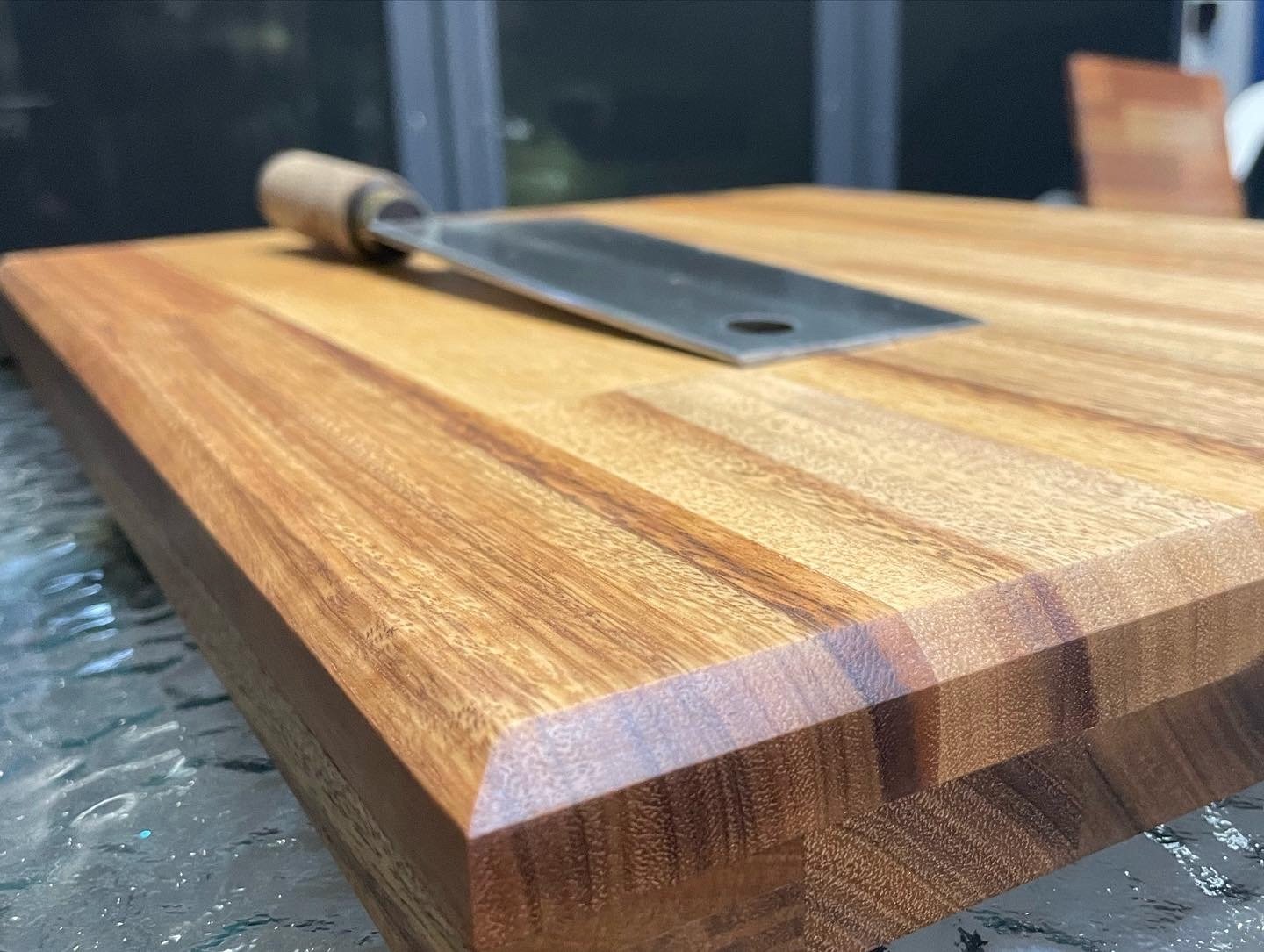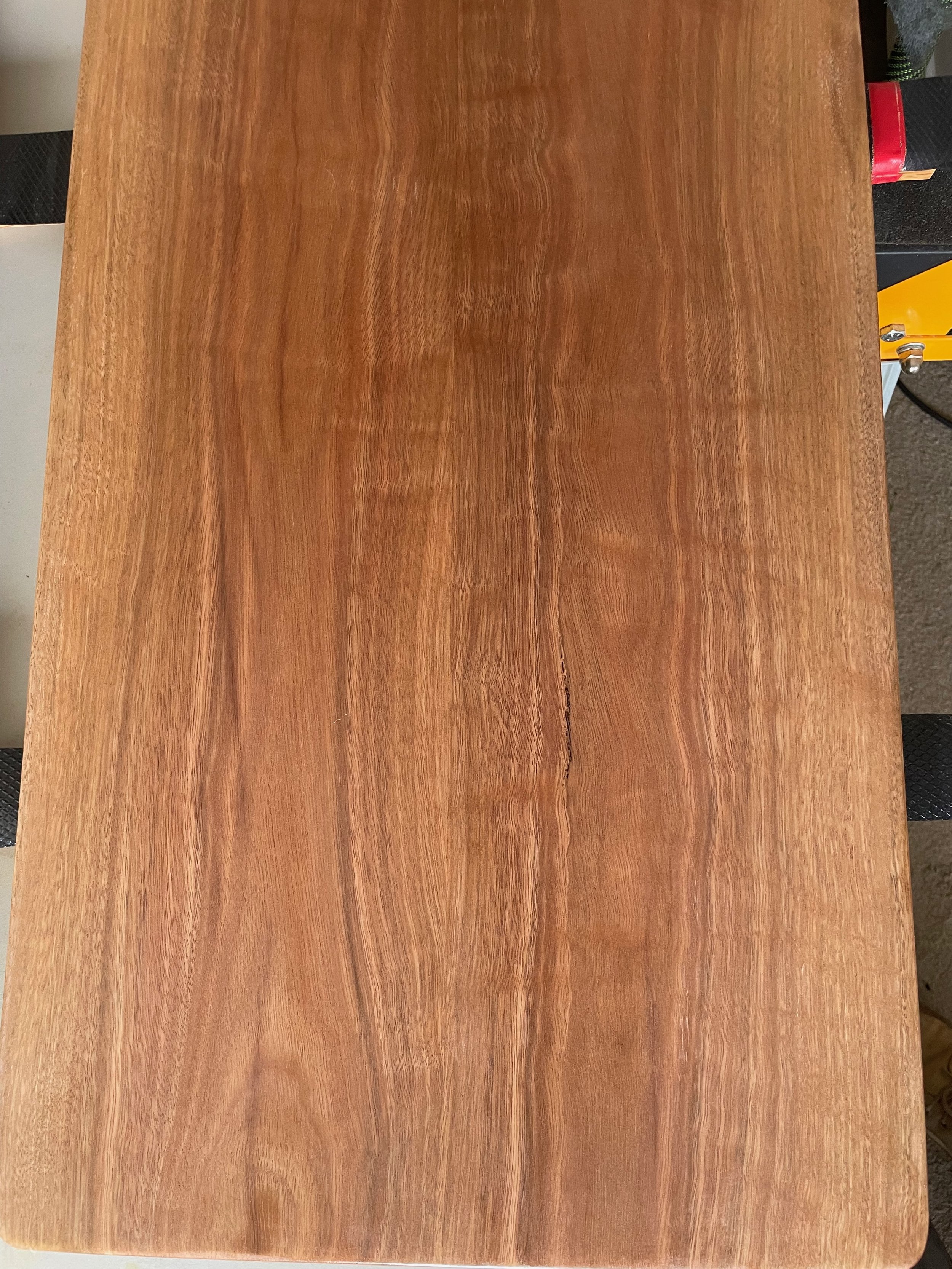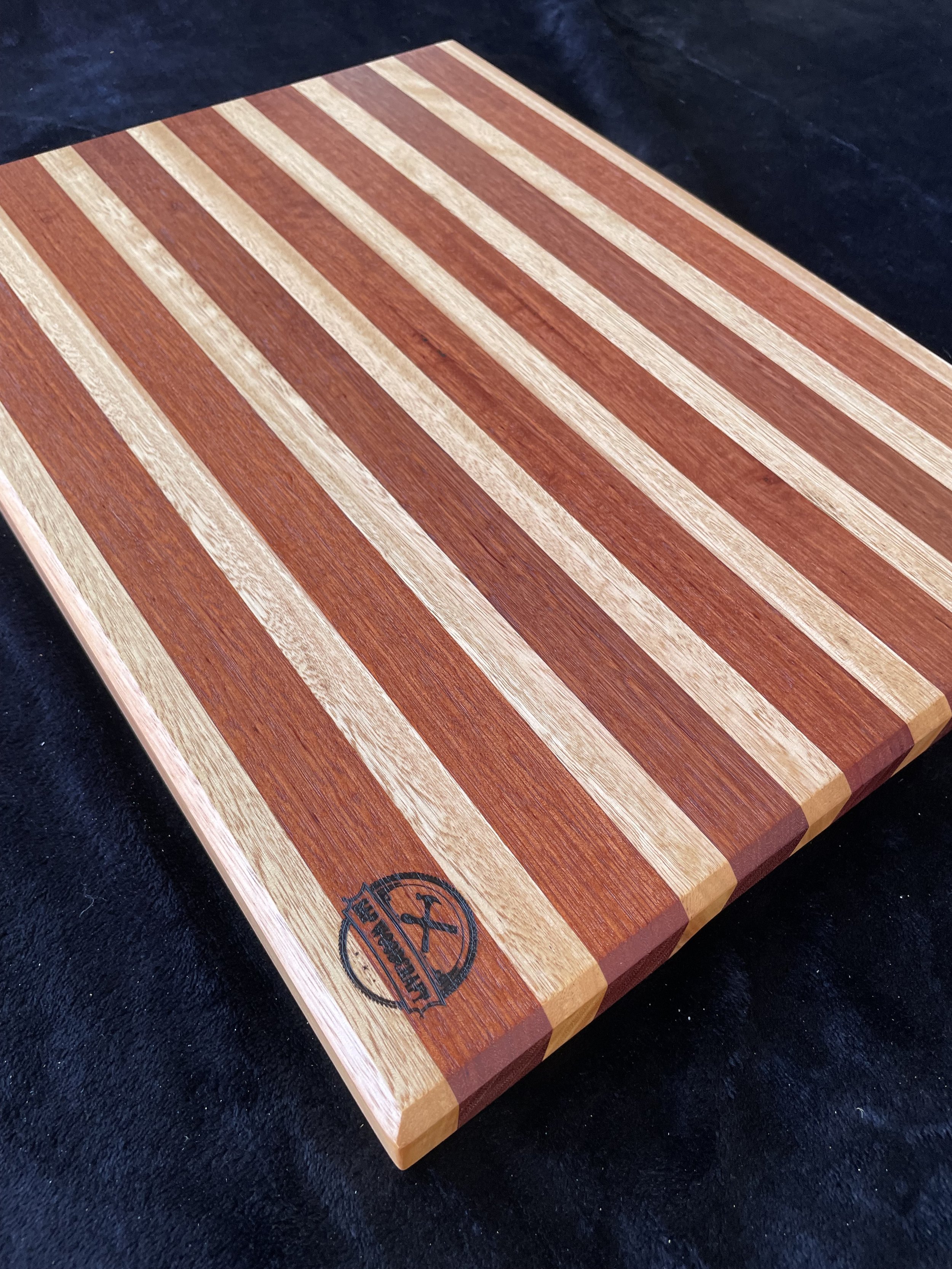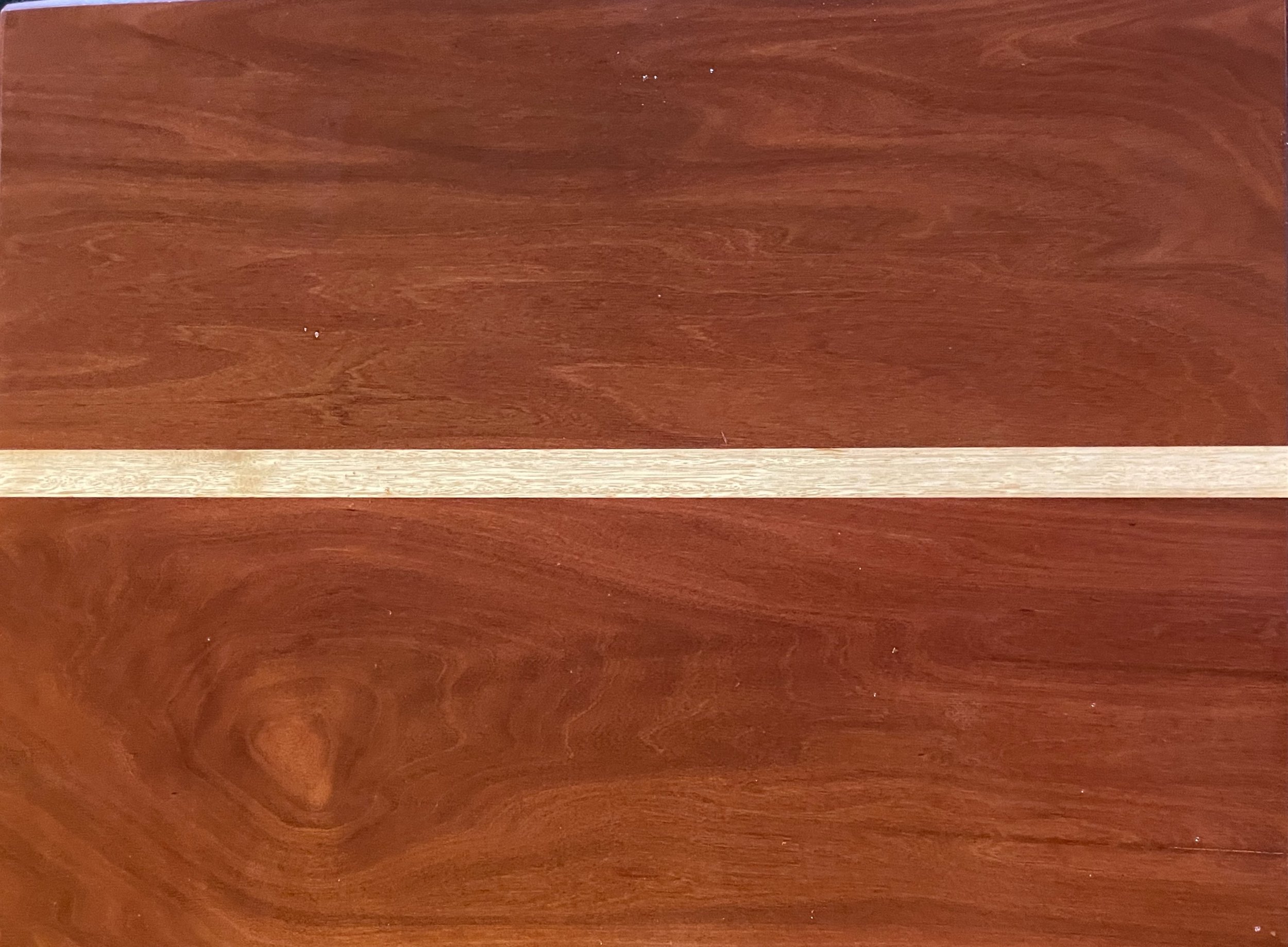Face, Edge, or End Grain
How your chopping board is made affects its appearence.
Face, Edge, or End Grain. What’s the difference?
There are primarially three different ways to make cutting/serving boards; face grain, edge grain, and end grain cutting/serving boards. Each cutting board style has a different appearance, and each cutting board has its pros and cons. It is a personal choice as to which cutting board works best. So what are the differences in each type of cutting board?
A little understanding of how wood fibres or grain as it is often referred to, helps in understanding the differences between the types of wooden cutting boards. Wood fibres are like straws. Imagine a bundle of straws. Those straws represent wood fibres that run lengthwise down a tree truck and then lengthwise down a piece of timber which is then turned into a wood cutting board.
A piece of timber has 4 sides and two ends. Generally speaking, the sides of the piece are called “edge”, and the top and bottom are called “face” and the ends are called, well, “ends”.
Face grain is the wider top and bottom of a board where one sees the beautiful grain. The main limitation to face grain boards is that we are limited by the width and thickness of the timber we can get from the mill, trees only grow so thick. The maximum width available from our supplier is 290mm, so a single-piece face grain chopping board has a maximum width of 290mm and a depth of 40mm.
However, this doesn’t mean you are limited to just 290mm wide for your chopping or serving board. Several face grain pieces can be glued together to create a larger board that showcases the grain of each individual piece or by inserting a different timber species between the pieces we can create attractive highlights.
Think of a large timber table top that show off the beautiful grain of the timber. these are made from several pieces joined together to create a larger piece whilst keeping the timbers natural grain showing.
Face grain chopping boards require the least amount of timber and are the least labour intensive therefore they are generally less expensive that edge or end grain chopping boards.
Edge grain cutting boards are crafted by laying parallel strips of premium Australian hardwood side by side and gluing them together. The wood fibres run horizontally the same as Face grain boards but less of the grain “face” is showing on each strip. Edge grain boards are not limited in thickness like face grain boards and can be made to any thickness and size and using different wood species such as the deep red of blue gum and lighter white mahogany joined together as shown below can make for a visually striking chopping board.
When creating edge grain chopping boards I consider the different characteristics of grain and colour for each piece to create a visually appealing chopping board.
Edge grain chopping boards do require more material and work to create as each strip must be cut and milled prior to glueing to create a seamless tight joint that won’t come apart and looks beautiful.
End grain cutting boards add another manufacturing step taking the edge grain boards then cutting these into strips then milling and glueing these together with the end grain uppermost. Go back to the bundle of straws analogy at the beginning, we now have those straws arranged vertically. End grain cutting boards or butcher blocks are usually much thicker than cutting boards and take more timber and a lot more time to create which is why these tend to be the most expensive chopping boards.
All three styles of SAP Woodcraft chopping boards are made of premium hardwoods, ideal for safe food prep surfaces and for impressive food displays while entertaining.
Pick the construction that is more aesthetically pleasing to your eye or kitchen style and budget. Remember that proper care and maintenance are the keys that will extend the life of your cutting board, whether you choose end or edge grain, to keep it in excellent condition for years to come.
Still not sure? Reach out and I will help guide you through this process. I have years of experience and in-depth knowledge. Consequently, I will make the selection process a breeze and ensure you have the perfect product for the job. If you have a particular wood species, species combination, size, or a specific look for a cutting board, Serving board or chopping board SAP Woodcraft does custom cutting/serving boards so just ask! Contact us to discuss your requirements and what will work best for you.

